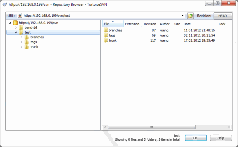

Here is a quick overview of the extensions I currently have enabled. If you want to load any other extensions you simply supply the path after the = sign. TO enable an extension that already comes with Mercurial you simply need to add the name of the extension followed by the = sign in order to load the extension with Mercurial it's really that easy. Some Mercurial extensions are available right out of the box. This section defines any extensions you wish to use to add additional features to your mercurial experience. So taking my example below I can very quickly pull from the Umbraco repository by typing the following into my chosen command prompt:
TORTOISEHG SETTINGS PROMPT USERNAME FULL
This section of the configuration file allows you to supply shorter friendly names for your repositories so you don't need to enter the full repository address each time you want to interact with it by means of pushing or pulling changesets. Depending on interest in this I may at a later date do another post on setting up SSH with mercurial to save the hassle of entering repository login details all of the time. This is a relatively new addition to my configuration file and provides mercurial with the command to execute for any SSH connections. I've tried a few alternatives but this is the one that works for me so I've stuck with it. This is your tool of choice for resolving merge conflicts, my personal preference is still with tortoisemerge which I am familiar with from my Subversion days. As you can see, my preferred choice is Notepad++ but could really be any text editor of your choice. This is the application to use for editing comments relating to your commits. I find this useful to know what is going on in the background. Default is and one of the reasons for this blog post.ĭisplay more detailed output. Typically a person's name and email address, e.g. Simon Dingley. Identifies the user committing the changeset. Ssh = "TortoisePlink.exe" -ssh -2 -batch -C See below for an extract of my mercurial.ini configuration file with a breakdown below of the purpose for each configuration setting:Įditor = "C:Program Files (x86)Notepad++notepad++.exe" -multiInst -nosession If your's is not there you can either create it or refer to the Configuration files for Mercurial documentation. You should find your Mercurial configuration file in %USERPROFILE%mercurial.ini. Having spoken to one of the other developers about updating his mercurial.ini file with a static username and email address I found he was blissfully unaware of the feature as I expect are many others and hence my blog post. This is resulting in each commit to my repositories often having a different username and meaning I have to keep mapping alias after alias to the BitBucket user accounts so my repo's look nice and tidy with peoples avatars all displaying correctly (because I'm anal like that!). During the course of these collaborations I have been giving access to some of my Mercurial repositories on BitBucket to other developers and noticed that simple things like a consistent username have not been configured in their environments.

I am doing an increasing amount of collaborative work at the moment.


 0 kommentar(er)
0 kommentar(er)
